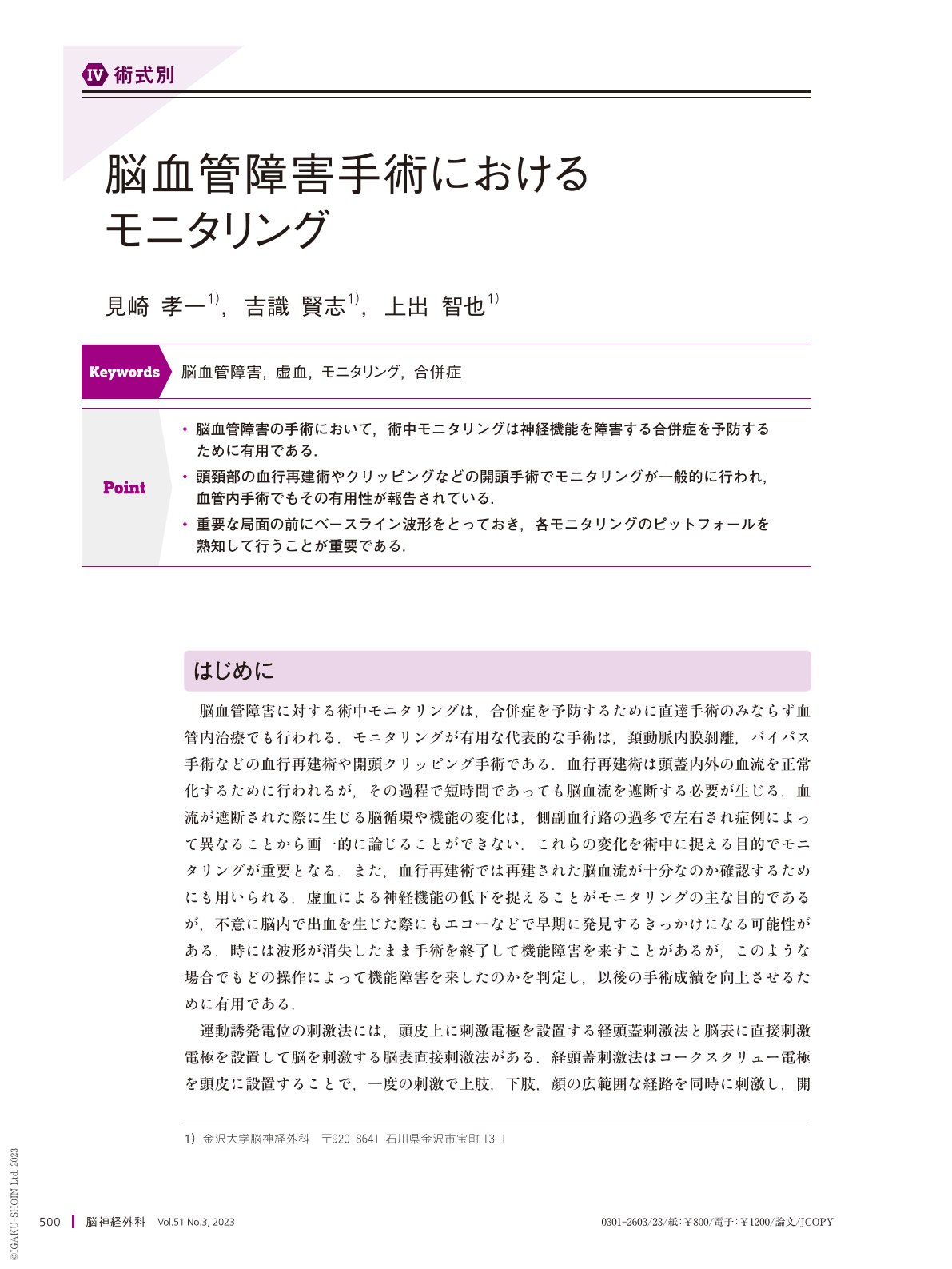Japanese
English
- 有料閲覧
- Abstract 文献概要
- 1ページ目 Look Inside
- 参考文献 Reference
Point
・脳血管障害の手術において,術中モニタリングは神経機能を障害する合併症を予防するために有用である.
・頭頚部の血行再建術やクリッピングなどの開頭手術でモニタリングが一般的に行われ,血管内手術でもその有用性が報告されている.
・重要な局面の前にベースライン波形をとっておき,各モニタリングのピットフォールを熟知して行うことが重要である.
Intraoperative monitoring of cerebrovascular disease is performed in direct surgery and endovascular treatment to prevent complications due to blood flow disturbance. Typical surgeries in which monitoring is useful are revascularization surgeries, such as bypass, carotid endarterectomy, and aneurysm clipping surgery. Revascularization is performed to normalize intracranial and extracranial blood flow but requires interruption of blood flow to the brain, even for a short time. Changes in cerebral circulation and function when blood flow is blocked cannot be generalized because they are affected by collateral circulation and differ among cases. Monitoring is important to understand these changes during surgery. It is also used in revascularization procedures to check if the reestablished cerebral blood flow is adequate. Changes in monitoring waveforms can detect the emergence of neurological dysfunction, but in some cases, clipping surgery can end with missing waveforms, leading to dysfunction. Even in such cases, it can help identify which surgery caused the malfunction and improve the outcome of subsequent surgeries.

Copyright © 2023, Igaku-Shoin Ltd. All rights reserved.


